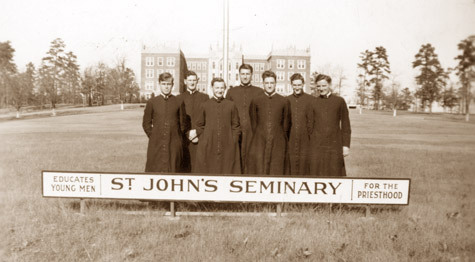Severity: Warning
Message: getimagesize(https://www.arkansas-catholic.org/photos/2698/stjohn_facts_pic.jpg ): failed to open stream: HTTP request failed! HTTP/1.1 400 Bad Request
Filename: views/ac.php
Line Number: 295

Read about the 100th anniversary of St. John Seminary.
Please read our Comments Policy before posting.
Article comments powered by Disqus What the Catholic Church teaches about purpose for work
What the Catholic Church teaches about purpose for work
 Three Catholic High seniors sign to discern priesthood
Three Catholic High seniors sign to discern priesthood
 Speaker educates clergy on same-sex attractions, gender
Speaker educates clergy on same-sex attractions, gender
 Kentucky Derby jockey traded spreadsheets for horses
Kentucky Derby jockey traded spreadsheets for horses
 The devil? Don't 'self-diagnose': follow Church guides
The devil? Don't 'self-diagnose': follow Church guides
 I knew in fifth grade Jesus was my best friend
I knew in fifth grade Jesus was my best friend
 St. Joseph a model of solidarity with immigrants
St. Joseph a model of solidarity with immigrants
 Two gifts after Jesus’ death: Virgin Mary and Eucharist
Two gifts after Jesus’ death: Virgin Mary and Eucharist
 Why we have an altar, and not just a communion table
Why we have an altar, and not just a communion table
 Pope: Wars should be resolved through nonviolence
Pope: Wars should be resolved through nonviolence